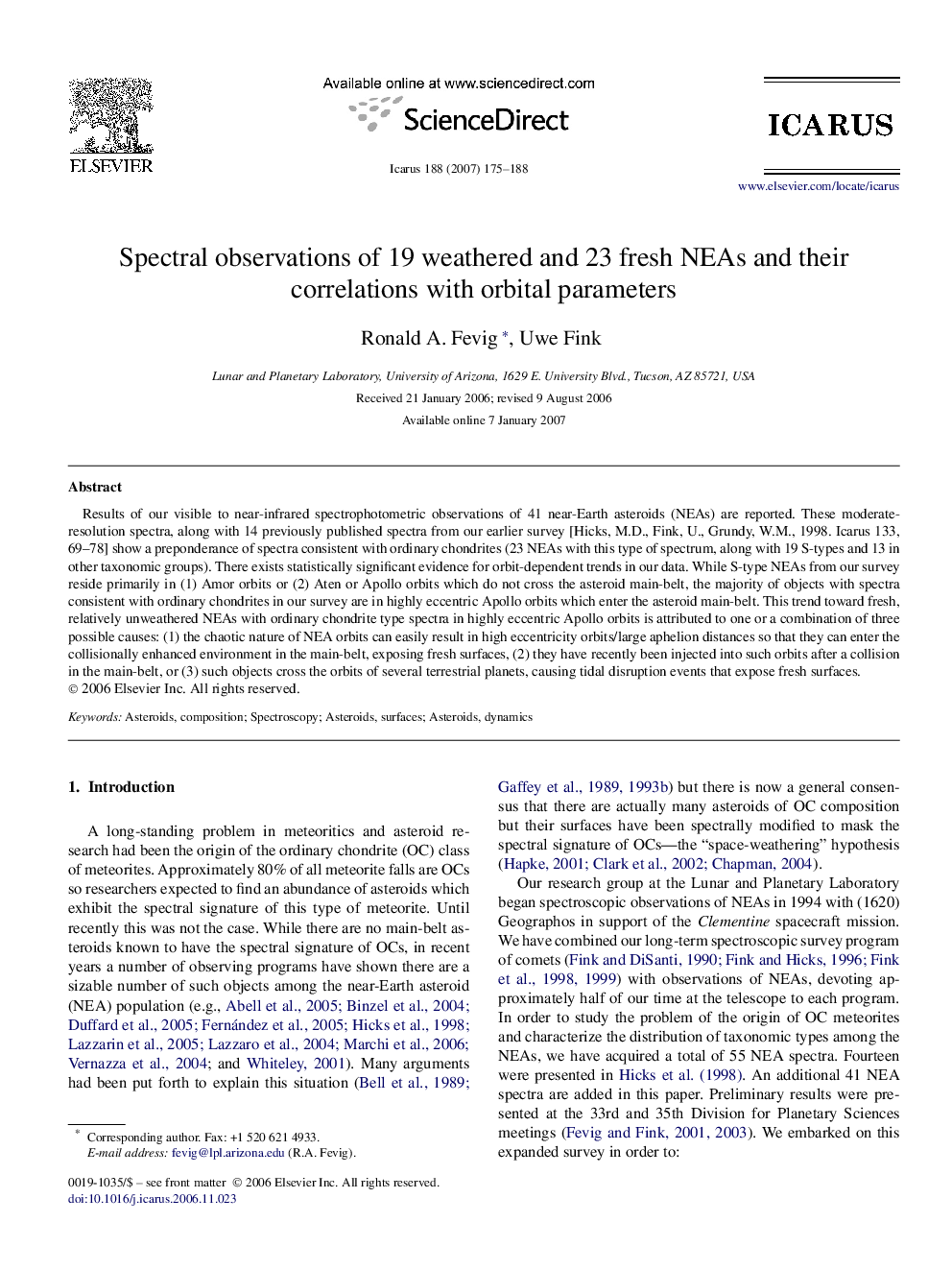| Article ID | Journal | Published Year | Pages | File Type |
|---|---|---|---|---|
| 1776000 | Icarus | 2007 | 14 Pages |
Results of our visible to near-infrared spectrophotometric observations of 41 near-Earth asteroids (NEAs) are reported. These moderate-resolution spectra, along with 14 previously published spectra from our earlier survey [Hicks, M.D., Fink, U., Grundy, W.M., 1998. Icarus 133, 69–78] show a preponderance of spectra consistent with ordinary chondrites (23 NEAs with this type of spectrum, along with 19 S-types and 13 in other taxonomic groups). There exists statistically significant evidence for orbit-dependent trends in our data. While S-type NEAs from our survey reside primarily in (1) Amor orbits or (2) Aten or Apollo orbits which do not cross the asteroid main-belt, the majority of objects with spectra consistent with ordinary chondrites in our survey are in highly eccentric Apollo orbits which enter the asteroid main-belt. This trend toward fresh, relatively unweathered NEAs with ordinary chondrite type spectra in highly eccentric Apollo orbits is attributed to one or a combination of three possible causes: (1) the chaotic nature of NEA orbits can easily result in high eccentricity orbits/large aphelion distances so that they can enter the collisionally enhanced environment in the main-belt, exposing fresh surfaces, (2) they have recently been injected into such orbits after a collision in the main-belt, or (3) such objects cross the orbits of several terrestrial planets, causing tidal disruption events that expose fresh surfaces.
